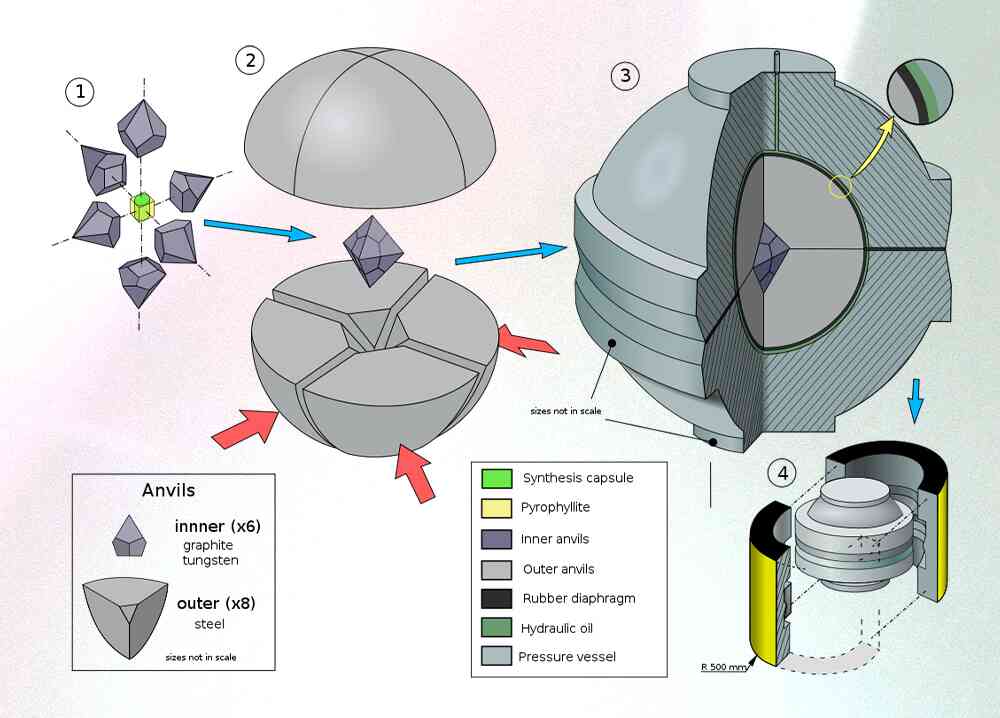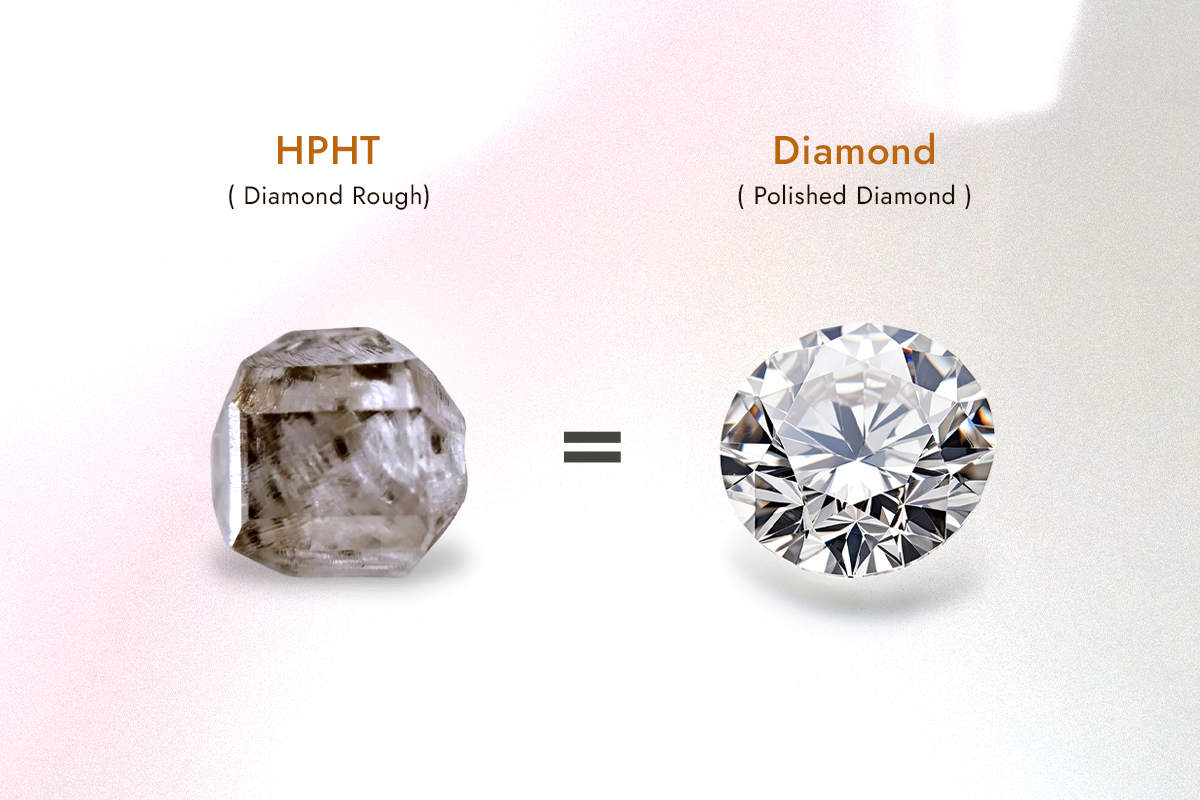HPHT Diamond Process Explained: From Seed to Sparkle
HPHT diamond (high pressure and high temperature) is made in a lab and the De Beers company developed the process to create diamonds that are more valuable than those created through traditional mining methods.
The process involves heating a mixture of carbon, hydrogen, nitrogen, oxygen, and other elements at extremely high pressures for several hours or days until it becomes liquid metal. This causes the atoms within the material to rearrange themselves into new structures which can be used as gemstones. These gems have been known since ancient times but were not widely produced until recently due to their rarity and cost.
Today they are commonly found in jewelry stores around the world. Diamonds were originally formed deep underground where temperatures reached up to 2200 degrees Fahrenheit. As time went by, scientists began looking at ways to create synthetic diamonds using different methods. One method involved heating graphite ore until it turned into carbon and was made from a carbon source. Another way was to heat silicon carbide which would then turn into quartz. Both of these materials could not produce diamonds though.
What Are HPHT Diamonds?

HPHT diamonds are one type of lab-grown diamond, which means that they were grown in a laboratory instead of mined from the earth. These lab-grown HPHT diamonds have the same chemical optical, chemical, and physical properties as natural mined diamonds. They also have the same hardness, durability, and brilliance as naturally mined diamonds.
The only difference between these two types of diamonds is their origin. HPHT diamonds can be made with any color or clarity grade. The HPHT treatment process does not change the appearance or quality of your diamond. It simply changes its original form into something more suitable for cutting. This new form makes it easier to cut and polish the stone.
Future Of HPHT Diamonds
The future of HPHT diamonds looks bright with many companies working on creating better technology to make them even stronger and cheaper. There are also plans to use this technique to create artificial diamonds from non-diamond starting materials such as coal tar and oil shale. It will take some time before we see any real results because there are still so many things to learn about how to control the reaction properly. However, if all goes well, we may soon find ourselves wearing our own custom designed engagement rings!
The HPHT process is the most common method of diamond production. It involves heating a mixture of carbon and metal to extremely high temperatures, which causes them to react with each other in various ways. The resulting product contains many different types of diamonds that are all formed at roughly the same time. This means they have similar characteristics such as color, clarity, hardness, etc., but can be differentiated by their size or shape.
Benefits Of Using HPHT Diamonds In Fine Jewelry
HPHT diamonds are preferred to use in fine jewelry along with various types of metals like gold, platinum, silver, etc. HPHT diamonds are available easily at a wholesale price and have also been certified for diamond clarity, and purity, for this reason, jewelry manufacturers rely on them and use them in jewelry to build ornaments.
Reasonable Price:
HPHT diamonds come at an affordable price rather than a natural stone. Natural diamonds are expensive due to their long process of mining, supply chain, middle commissions, etc. On the other hand, these HPHT diamonds come to you directly from the lab, which is one of the reason you can go with HPHT diamonds.
Certified Diamonds:

HPHT diamonds are subjected to rigorous evaluation and certification by reputable gemological laboratories such as GIA (Gemological Institute of America) and IGI (International Gemological Institute). This certification ensures that the diamond meets specific quality standards, providing consumers with confidence in their purchase.
Eco-Friendly:
Natural diamonds damage the minerals, lands, and forests as well due to lots of cutting trees, and blasts for mining there is earth damage that can directly affect climate change. This lab-grown HPHT diamond is completely environmentally friendly. The production of natural diamonds involves extensive mining activities that can lead to environmental damage, including deforestation and land disruption. HPHT diamonds, being lab-grown, have a significantly lower environmental impact. They do not contribute to the destruction of natural habitats or the release of harmful chemicals associated with mining operations.
A Wide Range Of Varieties Are Available
Diamonds grown in HPHT labs are available in many different types, which makes them perfect for any type of fine jewelry or engagement ring. You can choose from a wide range of shapes including; princess cut, round brilliant, pear-shaped, emerald cut, heart shape, oval, marquise, baguette, cushion, Asscher, radiant, or any other type that we have available for sale.
We are committed to providing our customers with the highest level of customer service and satisfaction while offering them an extensive selection of fine diamonds at competitive prices. Our goal is to provide you with the best value in all aspects of your purchase from start to finish!
Guide To Buying An HPHT Diamond
HPHT diamonds are now available online store website finegrowndiamonds and the easiest way to choose required diamonds is based on size, carat, color, and type. HPHT diamonds are used in fine jewelry mostly current time and making engagement rings, bracelets, pendants, and other jewelry.
Buy loose diamonds requirement from a given website with fill its accurate details. Buyers can choose and filter their requirements make it easily their custom orders online and make payments with a secure payment option.
HPHT Growth Process Vs. CVD Process Vs. Natural Process
In the laboratory, the raw materials are heated up to a very high temperature under pressure to form new compounds called carbides. These carbide crystals grow into tiny grains of pure diamond. When these small grains become large enough, they’re separated and polished until they shine bright white.
| Growth process typical | Typical growth morphology |
| Natural diamonds | Shape: Octahedron Growth: 8 Direction |
| HPHT Diamonds (High-pressure High temperature) | Shape: Cuboctahedron Growth: 14 Direction |
| CVD Diamonds (Chemical vapour deposition) | Shape: Cube Growth: 1 Direction |
A table of the growth process of Natural diamonds, HPHT diamonds, and CVD diamonds.

How Does An HPHT Diamond Differ From Other Types?
A traditional “natural” diamond has been mined from its parent rock using explosives and heavy machinery. HPHT and CVD diamonds are made in a Lab process under human observations.
What Is High-Pressure High Temperature (HPHT) Color Treatment?

Natural diamonds come in white colors but in Lab Created Diamonds, there are possible ways to process color-based like yellow diamonds, blue diamonds, pink diamonds, and others, Diamond colors range from D to H you can check our diamond color range page. HPHT process is time fixed and you do not worry about maintaining lab-grown-based diamond color and shining.
What Is The Difference Between HPHT Diamonds And CVD Diamonds?
There are major differences between HPT diamonds and CVD diamonds in just of growing processors for their morphologies techniques used. HPHT diamonds grow in cuboctahedron shape and have 14 growth directions, while CVD diamonds grow cubic and have 1 growth direction, while CVD diamonds grow cubic and have 1 growth direction.
HPHT Diamonds
CVD Diamonds
Difference between CVD diamonds and HPHT diamonds.

If you compare these lab-grown diamonds with natural ones then you can see natural diamonds come in octahedron shape and only have 8 growth directions. In lab grown diamonds HPHT and CVD both have used different techniques to grow HPHT comes with more yellowish and brownish types of diamonds developed and CVD diamonds are colorless.
Currently, time both technologies are implemented to develop diamonds like colorless and flawless diamonds, and their minor differences happen rather than this morphology technique. It’s worth noting that there’s a lot of conflicting information about which method of diamond growth is preferable. Behind the scenes, though, each corporation is attempting to push what benefits them the best. Customers will be advised to avoid HPHT diamonds by a CVD business, and vice versa.

